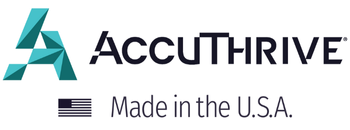
Breast Reduction Surgery Surges 59% – Why More Women Are Choosing It
Whether for pain relief, comfort or fashion, one thing is clear: women are pursuing breast reduction surgery more than ever. The trend toward smaller, more proportionate breasts is reflected in the 59% increase in aesthetic breast reduction surgeries since 2019.
According to the American Society of Plastic Surgeons (ASPS), more than 70,000 women opt for breast reductions each year, with the largest group being women under 30.
The Surge in Popularity: From Pandemic Dip to Record Highs
In 2019—the year before COVID-19—ASPS surgeons reported 46,340 cosmetic breast reductions performed. The pandemic caused a dip to 33,574 in 2020, but by 2023, the number skyrocketed to 73,816.
Why the sudden jump?
The reasons are multifaceted, but women cite:
- Neck, back or shoulder pain
- Difficulty exercising or engaging in high-impact activities
- Special-ordering bras due to limited sizing options
- Unwanted attention and self-consciousness
- Skin irritation, rashes and grooves from bra straps
- Criticism over sagging or disproportionate breasts
Breast Reduction: One of the Most Satisfying Cosmetic Procedures
Breast reduction surgery boasts one of the highest patient satisfaction rates in plastic surgery. Many women report:
- Immediate relief from physical discomfort
- Improved posture and mobility
- Aesthetic enhancement, with lifted, more proportionate breasts
- A major confidence boost—some even say they wish they had done it sooner
Cosmetic vs. Reconstructive: When Is It Covered by Insurance?
Breast reductions fall into two categories:
- Cosmetic – Primarily for aesthetic improvement.
- Reconstructive – Medically necessary (e.g., for pain relief, posture correction or post-cancer reconstruction).
Insurance coverage varies. Some insurers cover part or all the cost if deemed medically necessary. However, denial rates have risen, with a 2020 study noting increasing rejections from 2012 to 2017. Documentation (e.g., physical therapy records, chiropractor visits) can help strengthen a case for coverage
Surgical Techniques: Minimizing Scars and Maximizing Results
Modern techniques aim to reduce scarring while maintaining natural-looking results:
- Wise Pattern (“Anchor Scar”) – The most common method, leaving incisions around the areola, vertically down, and horizontally along the breast crease
- Vertical (“Lollipop”) Scar – A less invasive option for moderate reductions, with only a circular and vertical incision
- Liposuction-Only Reduction – Best for minor reductions in patients with good skin elasticity
Scars fade over time, especially with proper care like silicone gels, massage and sun protection.
Emerging Trends in Breast Reduction
More patients are requesting smaller, more natural looking results. The era of dramatic reductions is fading; many now opt for subtle, B or C-cup sizes.
Combination procedures – Some pair reductions with lifts or liposuction for enhanced contouring.
Is breast reduction right for you?
If you are considering surgery:
- Consult a board-certified plastic surgeon
- Discuss scarring, recovery and expected results with your surgeon
- Check insurance requirements if seeking coverage.
For many women, the benefits—less pain, better mobility and renewed confidence—make breast reduction a life-changing decision.
Let’s Connect
Join our mailing list to receive email updates on new product announcements, clinical articles and trade shows where you can test AccuThrive blades.
